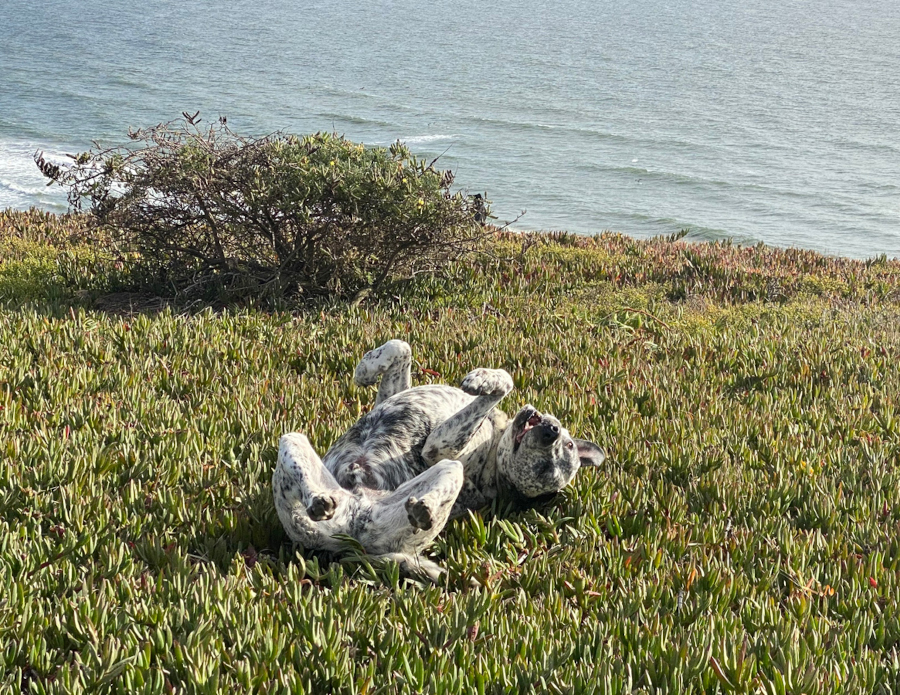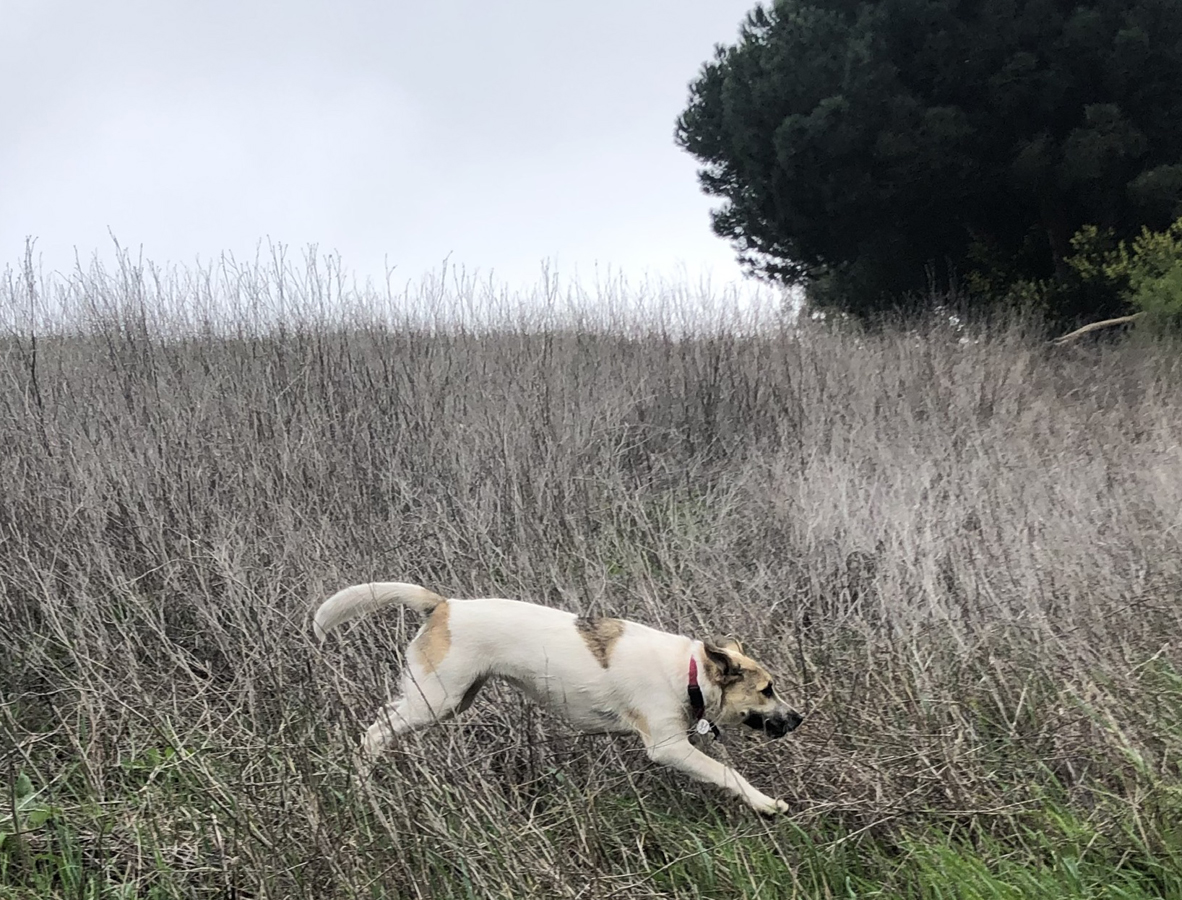Forget Perfection: Canine Choices Your Dog Will Thank You For

Allow your pal to make some of their own choices.
When I became a professional dog trainer, I assumed that my dogs and every dog I worked with would become perfect. Perfectly trained, perfectly obedient, and never naughty. As it turns out, the more I know about dogs, the more accepting I am of their innate dogginess. And the more I love them for it.
Helicopter parenting has increasingly become the norm for raising human children, and this form of caretaking has made its insidious way into our pets’ lives, too. Overly focused, high-achieving parents try to mold their children into perfect human specimens by controlling and monitoring every aspect of their lives. This is hard enough on human kids, but dogs are not tiny humans nor should they be treated as such.
Unfortunately, our expectations of pet dogs have now increased to an unreasonable degree. We don’t want them to shed or bark or get dirty or dig. We expect them to stay shut inside the house all day and not get bored, and we’re irritated when they get too excited or stop to sniff too often on leashed walks. We plan and time our dogs’ walks, and during off-leash time, we hover and call them back worriedly whenever they venture more than 10 feet away.
By fixating on getting our dogs to conform to our modern human lives, we forget that, even though they are domesticated animals, they are still an entirely different species. What is fun and satisfying to them is often messy, chaotic, and annoying to us. Often the problems that dog owners call a trainer to “fix” are normal and natural canine behaviors. Some of these are: sniffing, chewing, vocalizing (barking, howling, growling), digging, licking, running, playing, jumping, and sniffing other dogs’ butts.
Of course, just because these are all normal dog behaviors doesn’t mean they are appropriate in every situation. I don’t advocate letting your dogs do whatever they want any more than I would raise my children without rules and boundaries. Training your dog and managing your dog’s environment is necessary for a safe and peaceful coexistence. But if we want our dogs to be happy, we need to allow them the space and the freedom to express these instinctive canine behaviors.
Our dogs are dependent on us for everything. We choose when they get to go outside, what they eat, where they are allowed to poop, who they play with, where they get to walk, and when it’s time to leave the park. When we say jump, they often happily ask, “how high?” But when was the last time your dog had any real agency? Not having any control or choice can be a source of stress and anxiety for dogs and humans.

- Let your dog pick the route. We usually lead the way and make our dogs follow. Instead, keep the leash slack and let your dog pick which way to walk. Let them explore and wander and see where it takes you.
- Allow your dog quality sniff time. With 300 million olfactory receptors in their nose, dogs perceive their world through their sense of smell. They not only enjoy sniffing, but recent studies show that sniffing is a calming activity that lowers their pulse. It’s their walk, so let them stop and sniff.
- Teach a solid recall (“come”). Train your dog to consistently and reliably come when called so they can experience the freedom of off-leash playing and hiking. The Bay Area has so many awesome options for off-leash fun. Make sure your dog’s prepared to enjoy them.
- Practice consent. Dogs are sentient beings, not stuffed animals. Just because we want to pet and hug them doesn’t mean they are always in the mood. Learn how to tell if your dog really wants to be petted and don’t force affection on them. If your dog doesn’t enjoy being touched by strangers, it’s your job to step in and say so.
- Teach force-free cues. Pay attention to all the instances when you’re physically forcing your dog to do something and substitute a food lure to teach them to do it willingly. Instead of grabbing your dog’s collar and physically pulling them off the couch, teach them “on” and “off.” Train loose-leash manners so walking isn’t a battle of wills. Desensitize your dog to having their harness put on rather than struggling to get them ready for a walk.
- Give them a safe place. Your dog needs downtime and a place to go when they don’t want interaction. This can be a dog bed or a crate or a quiet place in the house where they can chill out without being bothered. This is especially important for shy or anxious dogs or if you have a busy household with kids and other dogs.
- Listen to your dog. Each dog is an individual with different likes and dislikes. Don’t go to the dog park if your dog doesn’t care about socializing with other dogs. You want a running partner but your dog would rather mosey along and sniff at a leisurely pace? Oh well.
- Offer chew choices. When we want to zone out and relax, we can choose Netflix or a novel. Why not give your dog a choice of fabulous things to chew? Go to the pet store together and let your dog choose their own chew or toy.
- Allow sleep choices. Healthy adult dogs sleep 12-14 hours a day. Give your dogs a choice of where they want to spend that quality sleep time.
- Train at your dog’s pace and level. Make training sessions fun and short and keep the treats flowing. End on a positive note before your dog gets bored or frustrated. Training should never feel like a chore for either of you.
As humans, we’re responsible for our dogs’ safety and well-being. Common-sense training is a big part of that responsibility, but so is knowing and embracing their dogginess.
That means letting go of unreasonable perfection - and leaving room for them to be the dogs they are.

